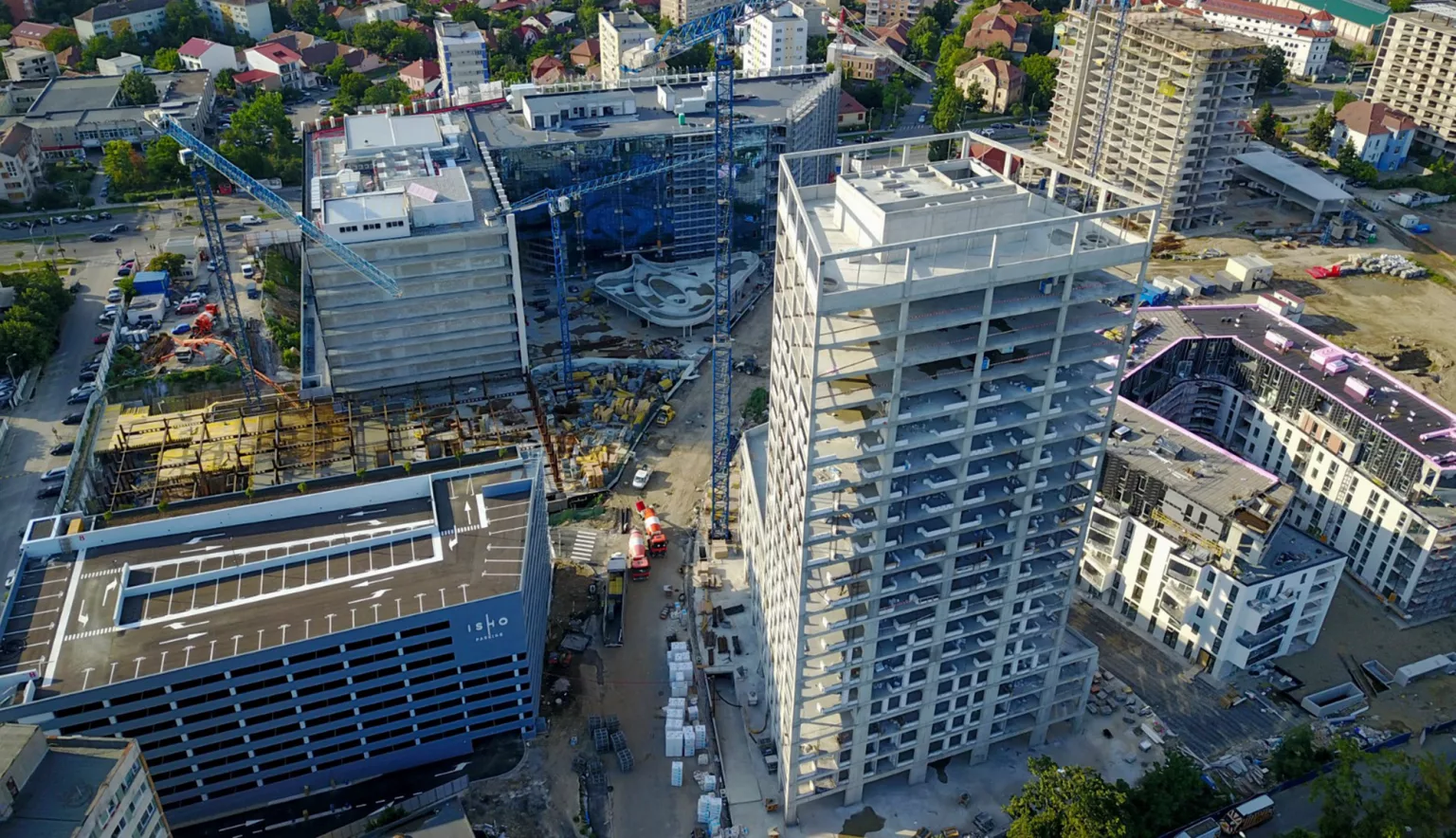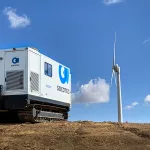Despite the ongoing disruption to business caused by the coronavirus outbreak, Romania’s ADNBA continues to deliver leading architecture and design services for its clients in Bucharest and beyond.
ADAPTING TO DELIVER
In a time of crisis, creativity and adaptability are paramount in order to emerge stronger from the other side.
The worldwide COVID-19 pandemic has impacted almost all corners of the earth and continues to disrupt home and working life, the virus taking the lives of many and forcing societies to alter the way they go about day to day social and economic interaction.
In Romania, the outbreak arrived at a time when its economy and construction sector were on the up.
Building activity has been increasing steadily in recent years, providing plenty of opportunities for architecture firms such as Bucharest-based ADNBA to make their mark on the built environment.
But recent times have tested the company’s resolve, the challenge being embraced by its Founding Partners Andrei Serbescu and Adrian Untaru, who set up the practice in 2003 after graduating from architectural college. Little could they anticipate the scenario they would face 17 years later.
“The coronavirus crisis has slowed down economies all over the world, and Romania has not been immune,” says Serbescu. “We are adapting to the situation. At this moment, all our architects and employees work from home and we think these lockdowns will have a profound impact on how creative businesses in general will work in future.
“We are learning new styles of management regarding the ability to disperse assignments efficiently across team leaders and rely on their deliverables without as much supervision or guidance as we normally would.
“Even though we are used to working remotely because of the Timisoara office we opened in 2018, which we manage from Bucharest, we still find it a challenge to manage the whole organisation from afar. Construction site supervision is particularly difficult to handle at this moment. However, our studio is holding up well and we continue with our ongoing projects and their delivery.”
Serbescu and Untaru have built up some formidable experience in the Bucharest market. ADNBA is especially well-known for its prowess in the apartment design space, and is gradually taking on more complex, larger projects after gaining a foothold with small buildings and individual houses.
A turning point arrived in 2014, which Untaru believes has laid the foundation for where the company stands today.
“The apartment block we designed for Urban Spaces on Dogarilor Street caused an explosive reaction,” he recalls. “It brought a continuous flow of awards and nominations, international publications and a consensual appreciation for our practice.
“For us, Urban Spaces Dogarilor was a challenge. We tried to control everything, including the detailed design not only for all common spaces, but also several apartments’ interiors, from furniture to light fixtures. It was a very diverse project without any repetitions and a high level of intricate details – almost everything was custom-made.
“But the result has paid off. Since then, our office has achieved critical recognition for its built projects and competition entries, which represent to our clients a guarantee of a theoretical and practical architectural partner dedicated to housing and much more.”
And partner is the key word. Serbescu and Untaru firmly believe in the power of communication and collaborative working relationships, not only between client and architect, but also architect and suppliers.
“It’s a collective work and we all have a determining part in the design process,” Untaru explains. “We also think that there are some key factors that can lead to a good collaboration.
“First is the confidence the client puts in the architect, and sometimes also one’s courage to endorse experiments. Second is the developer’s acknowledgement of the architectural design’s importance for any successful project. Third is the developer’s vision of the place and what that place could bring to the people it is being made for.”
A PROGRESSIVE PROJECT PIPELINE
Despite the challenges faced by the ongoing COVID-19 disruption, as Serbescu has already alluded to, ADNBA continues to develop relationships and make solid progress on projects.
Many of the company’s developments are in central Bucharest, which has seen a densification of buildings in recent years that has tested the relationship between old and new parts of the city. This creates an even greater responsibility for the likes of ADNBA to produce sustainable, responsible designs that will allow new constructs and renovations to fit seamlessly into their existing environments.
Serbescu adds: “A respect for a place does not simply mean the nostalgic takeover of some stylistic elements as this does not solve anything. We ensure our design approach can be sustainable far beyond the short term of 10 to 15 years.
“For each project that we design, we try to infuse an air of modernity and international metropolis, but also carry on a culture of living – fragmentation rather than brutal monoliths, narrow courtyards, beautiful gardens and hidden places, a wealth of filters and intermediate spaces, a civilised opening to the street. Large scale projects come, of course, with different sites and challenges.”
The Founding Partners go on to describe several projects either recently built, currently under construction or waiting in the pipeline.
Among ADNBA’s recently completed works is Mumuleanu 14, another collaboration with Urban Spaces. It is a housing development covering 3,450 square metres with two courtyards acting as the focal point, another feature being the fact that each apartment is designed more like a private house than an apartment.
Other notable completions from 2019 include the Dragos Voda residential project for Pop Properties, a series of customised one- and two-floor apartments spanning 2,534 square metres, and Calderon Housing for Forte Partners, an exclusive five-floor, five-apartment building featuring a highly detailed stone cladding façade and modern engineering systems throughout.
Meanwhile, Sfinții Voievozi 22-24 (Urban Spaces 5) is a 9,645 square metre housing project close to Calea Victoriei and currently under construction.
“For all of these projects, finding a common ground between new materials and different types of traditional-inspired practices was a particular aim,” explains Serbescu.
“We played a lot with traditional materials such as plaster. It is a material that was used heavily in the 1920s to 50s that is so simple and beautiful, especially nowadays, in a period when much of Bucharest is being rebuilt with polystyrene cladding on top of the old plaster facades. Another focus was on the individualisation of the accesses, the double orientation and the common spaces.”
In terms of projects currently in progress, Untaru highlights the Avalon Estate as a particularly prominent example.
Spread over eight hectares in Bucharest’s Pipera neighbourhood, the site is being developed by Prime Kapital and will include 800 to 900 homes of all sizes and specifications – a much greater scale of work for ADNBA which involved more than 30 months of meticulous designing.
Once complete the Avalon Estate will comprise detached houses, semi-detached houses, apartments in small buildings and private villas, as well as common facilities such as a clubhouse, gym, kindergarten and large park directly accessible to inhabitants.
“The best part of this project was that we had the opportunity to create a community,” Untaru says. “This type of integrated large-scale, complex project is new in the Romanian market, also because most investors do not want to spend so much time on the design process; they don’t have the financial security to do so.”
Prime Kapital is a different proposition, however, and has already started construction of a residential community in partnership with ADNBA – a five-building development containing 466 urban apartments and common spaces near the capital city’s Jiului metro station.
In Timisoara, near the Bega River, construction has almost completed on ISHO A, a 20-storey tower being developed by Mulberry Developments. The building is part of a wider assembly that will redefine the entire Take Ionescu-Baader area – part of a new neighbourhood that will provide not only residences, but also offices, hotels, sports facilities, restaurants and playgrounds.
FROM BUCHAREST TO BERLIN
The ability for ADNBA to take on larger, multifaceted projects is evident in what Serbescu and Untaru have just described.
Indeed, central to this added capability has been an evolution over the past few years of how the firm is managed internally, making the most of the different specialisations within the office by improving coordination and collaboration.
“Our goal was to obtain a unique team with integrated services – architecture, interior design, landscape design, permits, construction management, rendering, marketing and branding working together efficiently,” explains Untaru.
“In 2018 we started our own MEP in-house team in the form of ADNBPI, and we implemented building information modelling (BIM) for our projects. It allows us to have immediate access to any data related to the build model, providing fully coordinated information.
“For our clients and us it’s a huge advantage because, in the longer term, this translates into time and resource savings which allow a greater optimisation of each project and also of the design process. One of the biggest advantages of working BIM is that, within a project, all designers can work in real time on the same model.”
Further still, the Founding Partners decided to hire a dedicated BIM manager to ensure the technology is leveraged in the best possible way to suit ADNBA and its clients’ needs.
This has been a useful addition to the team, one which has also ventured into the office design market and is seeking to broaden its horizons geographically.
At the beginning of 2020 the company delivered its first boutique office building for client Primavera Development on Mihail Kogalniceanu and Independence Splay, just across from the Law University Building in Bucharest.
Another landmark office project for the coming year is situated in the heart of Bucharest on Victory Avenue, a development known as Sector 0. It will comprise two office buildings designed specifically for creative communities, including both companies and individuals.
“Historically speaking, this area has always hosted the most important buildings in Bucharest,” Untaru says. “Our site is next to the iconic Bucharest Telephone Palace and our proposals follow the line of a rigorous, yet beautifully crafted architecture specific to the area, on which they superimpose the layer of their own logic, in order to fulfil the offices programme’s specific necessities and achieve a well integrated, still contemporary architecture.”
The addition of office designs to the ADNBA will only serve to secure its long-term future as a leading architect practice in Romania, especially in Bucharest which remains the company’s core market and major centre of activity.
However, it is not Bucharest where Serbescu chooses to end the conversation. Rather, the Founding Partner has his eyes set further afield, in Berlin.
Looking ahead to an exciting chapter of growth, he says: “Our plan is to open an ADNBA DE division in Germany. It’s been on our minds for quite some time and we are very excited about it.
“We look at Germany as a market with a lot of future potential for us. It is a stable and solid market, open to UE design companies through quite a lot of design competitions (which are not common on the local market) and through a mentality directed to absorbing foreign talent and knowhow – at least this is how we see it now.
“Berlin has proved throughout the last 15 to 20 years to be ‘the place’ in Europe when talking about local opening towards global diversity in design. We know the competition is strong, but we also know that our team is very talented and highly skilled and that we have developed a set of diverse, powerful design and management tools which can help us compete with almost any other local or international company, especially on the residential market.”
























